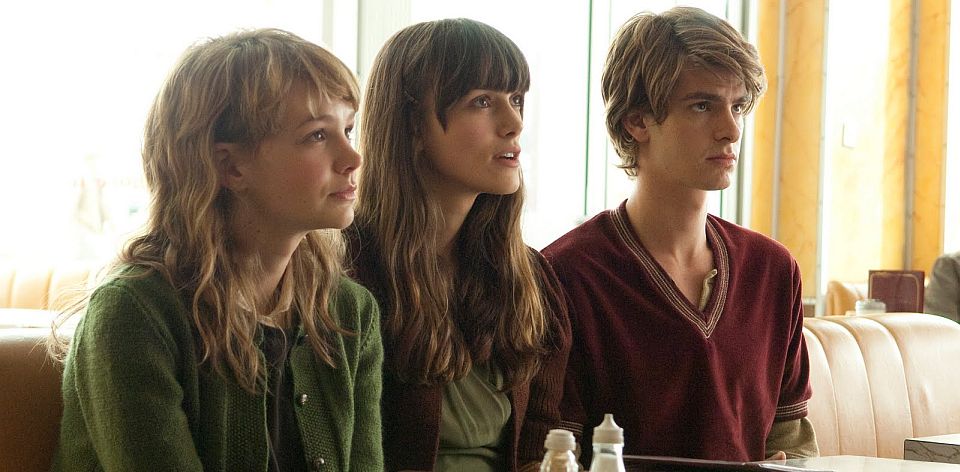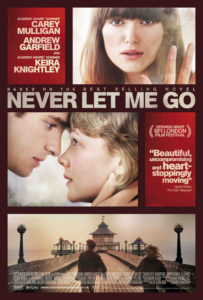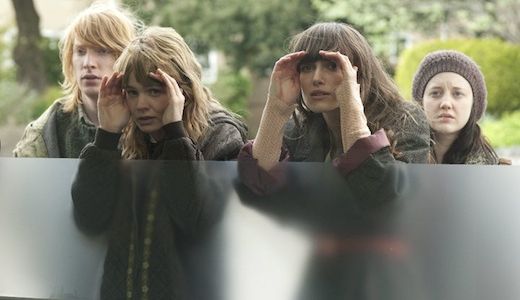Director Mark Romanek made his major cinematic debut with the criminally underrated One Hour Photo, showcasing a rare sinister turn for his star Robin Williams. Using Jeff Cronenweth’s (The Social Network) breathtaking cinematography to make us take another look at the otherwise ordinary settings of a shopping mall photo shop and a suburban home, Romanek had made the dramatic leap from music video director to features in a seemingly effortless way.
His music videos, chronicled in the Work of Directors – Volume 4: Mark Romanek saw him working with the high-profile (Madonna, Michael Jackson), the alternative (Beck, Nine Inch Nails) and the legendary (Johnny Cash and his magnificent cover of Hurt). Drawing influences from art, literature, photography and the music itself, Romanek fills every frame with detail without ever overshadowing the artist. Here he applies that same methodology for his first feature since 2002, an adaptation of Kazuo Ishiguro’s (Remains of the Day) award-winning novel, Never Let Me Go.
In the film’s version of events, a medical breakthrough in the 1950s has extended the average lifespan to well over 100 years. An adult Kathy H (Carey Mulligan, Wall Street: Money Never Sleeps) reflects on her years in the sheltered private school Hailsham, and her early adult life with schoolmates and friends Tommy (Andrew Garfield, The Social Network) and Ruth (Keira Knightley, Pirates of the Caribbean: At World’s End). The trio rapidly realise that they are not like other children, and they will not grow up to be like other adults either. Yet the destinies of the three friends will be inexorably linked throughout their short lives as they move towards the fate that awaits us all.
The adaptation of Kazuo Ishiguro’s 2005 novel was a challenging task, especially given the very deliberate pacing of the novel to indicate the (often monotonous) passing of time for these fated individuals. The novel’s split of the narrative into “Childhood”, “Adult” and “Donor” does not readily fit into the language of film, but rather Romanek aims to make the timeline his own. Skimming much of the childhood sections of the story, in which Tommy’s inner rage and the ultimate love triangle forms, Alex Garland’s (28 Days Later, Sunshine) script spends much of its time in the young adult section of their lives.
Indeed, the ‘reveal’ of the nature of the children, coming some 80 pages into the book, is dealt with early in the film so as to concentrate on the consequences of this for the children. Garland, also a novelist (“The Beach”, “The Coma”), recognises the inherent drama in this awakening to the world around them, including their sexuality, their relationships with other people and the realisation that they cannot continue their perfect existence forever. Consequently, Kathy’s know-it-all voice – a strong presence in the novel – is partly lost, although the strengthening of the role of Miss Lucy (Sally Hawkins, Made in Dagenham) compensates for this in the early years. Romanek’s innate understand of the differences in the language of film and text demonstrates his sophistication as a filmmaker, providing his own visually distinct vision of Ishiguro’s world.
The total upheaval of the sci-fi genre has been long overdue, although Never Let Me Go only makes a passing acknowledgment of the alternate reality during the opening scrawl and quite literally wearing the sci-fi on its sleeve through the discreet monitoring bracelets the donors wear. Yet this too is almost inconsequential to the broader and more profound theme of the emotional passage from childhood into adulthood. That the hermetically sealed world of Hailsham carries over in part to their young adult lives only heightens the tragedy of that passage. All the leads are flawlessly cast as well, especially Carey Mulligan and future Spider-man Andrew Garfield as the hopelessly doomed couple.
With beautiful photography from Adam Kimmel (Rudo & Cursi), a stark contrast to the sterile look of his Romanek’s feature and many of his grimier music videos, some may find the film’s bleak visual (and thematic) tone difficult to adjust to. Others will instinctively relate to the characters on a far more fundamental level. Never Let Me Go may not be able to replicate the intricacies of Ishiguro’s novel (and nor should it) but it manages to create its own heartbreaking love-letter to the loss of innocence and the appreciation of the beauty of the cycle of death and rebirth.
The Reel Bits: The long wait for Romanek’s follow-up to One Hour Photo is not the same kind of slick and stylish visual feast that he has delivered in the past, but is instead an incredibly haunting and thoughtful musing on not only issues that continue to be debated in the popular sphere but speak to the very nature of our existence.
Never Let Me Go is released on March 31, 2011 in Australia by Fox.







No Responses